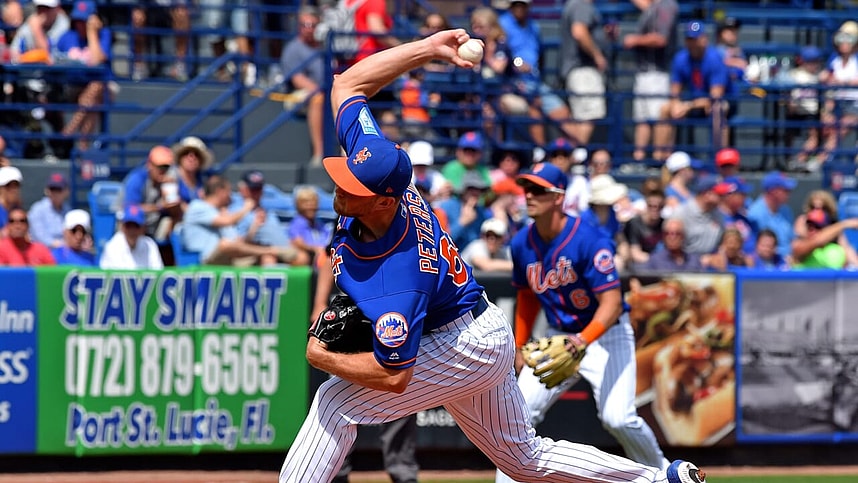
The Mets are desperate for starting pitching depth, and it’ll be up to David Peterson to provide it.
David Peterson is one of the Mets’ top prospects. He ranks in the Mets’ top 10 on every major prospect site. Some of that has to do with his draft prestige. Peterson was the Mets’ first-round pick in 2017 out of Oregon University.
Peterson is now 24 years old, but will not turn 25 until September. He’s a big kid, standing at six feet six inches tall and weighing in at 240 pounds. He’s a lefty, which helps him get the most out of his limited velocity and breaking pitches.
Peterson’s fastball sits high-80s to low-90s but gets a ton of movement. Peterson relies heavily on his sinker that breaks down and in to lefties. It’s his go-to pitch and he gets great results out of it for the most part.
Peterson’s go-to out pitch is his slider, which tends to sweep rather than dip. Meaning that his slider is more horizontal than vertical. It makes for a good contrast to his sinker and tends to get batters off balance when it’s on. The issue is that when it’s off it can become very flat and very hit-able.
Peterson also throws a changeup and a curveball, but neither of those two pitches are very good. They’re both average or fringe-average pitches. Neither being relied on to get outs often. The changeup is the better of the two pitches as it should be. If Peterson is to succeed in the majors his changeup will be key. His changeup is going to be key to getting right-handers out since it’s a harder pitch to pickup then his fastball or slider is. That’s true for all lefties.
Where Peterson really shines is his control. He has above-average control of all of his pitches, though his fastball command, in particular, is special. He is able to command the pitch to all four quadrents while getting the sink he wants most of the time.
That control of his sinker is one of the reasons that Peterson is one of the most recognizable ground ball pitchers in the minor leagues. Peterson’s career ground ball rate is over 60% and that’s been his issue so far.
Peterson has never been a strikeout pitcher. Last season at AA Peterson struck out 9.47 batters per nine innings. That’s the highest it’s been since he pitched in A- Brooklyn.
That means for the most part the ball is getting put in play against Peterson. He’s very similar to Marcus Stroman in that way. The defense in the minor, especially the infield defense, is never good. the fields themselves are usually on turf or not kept up to MLB standards. That makes it hard for even good defenders to make plays in the minor leagues.
That’s why each of the last two years Peterson’s FIP has greatly outproduced his ERA. Last season Peterson had a 4.19 ERA, but his FIP was 3.19 and his XFIP was 2.91. That shows that Peterson was pitching well, but his defense was letting him down more times than not.
Normally that would be great for a minor league prospect. It would mean that when they get to the majors they’ll outperform their minor league numbers because of a better defense. However, that won’t be the case for Peterson.
The Mets had the second-worst defense in the majors last season. That would not fit well with Peterson’s pitching style. Yet, despite everything Mets’ GM Brodie Van Wagenen named Peterson among the pitchers he expects to contribute to the team in 2020.
Peterson will start the year in AAA, it’ll be his first season there. He’s certainly a prospect to watch, as he’s the only top pitching prospect in the Mets system close to pitching in the majors.
More about: MLB New York Mets